Does Purple Toothpaste Work? A Dentist Reviews
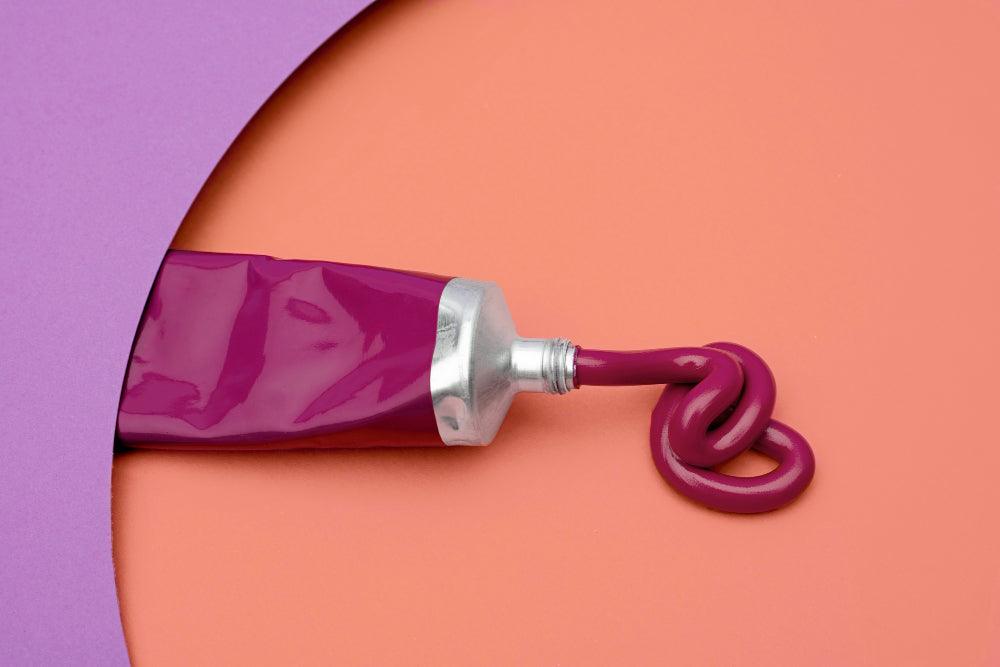
Related products
Purple toothpaste, while its hue may be intriguing, derives its effectiveness from specific attributes that contribute to oral health maintenance. The most important and key ingredient is fluoride, which reinforces tooth enamel and shields against decay. This, notably, aligns with the rigorous standards set by the American Dental Association (ADA), emphasising safety and efficacy.
The key factors in assessing the efficiency of purple toothpaste, or any toothpaste in general, depends on various aspects including:
-
Fluoride Content: The concentration of fluoride is a pivotal determinant. This mineral plays a pivotal role in strengthening the enamel, thereby curbing the incidence of dental caries. An efficacious purple toothpaste should prominently feature fluoride on its ingredient list.
-
Plaque Removal and Prevention: An effective toothpaste, regardless of its colour, should excel at eradicating existing plaque deposits and curbing the formation of new ones. It's imperative to scrutinise the product's claim regarding its plaque-cleaning prowess.
-
ADA Seal of Approval: The presence of the ADA seal underscores compliance with stringent standards, reassuring consumers of both safety and efficacy. It signifies that the product has undergone rigorous testing and met or exceeded the ADA's stringent criteria.
-
Taste and Texture: Individual preferences in flavor and texture hold significance. Adherence to a consistent oral care regimen is contingent upon personal satisfaction with the toothpaste's sensory attributes.
-
Tailored Formulations: Dental health concerns can vary, necessitating specialized formulations. Some purple toothpaste brands may offer variations geared towards addressing specific issues like tooth sensitivity, whitening, or gum health. Opt for the formulation that best aligns with your unique oral health needs.
-
Proper Brushing Technique: Regardless of toothpaste color, the efficacy of oral care largely rests on the method of brushing. It's imperative to dedicate a minimum of two minutes to thorough brushing, employing a soft-bristle toothbrush, while exercising gentleness to prevent damage to gums and enamel.
-
Frequency of Brushing: Consistency in oral care is paramount. Brushing a minimum of twice daily, ideally following meals and before retiring to bed, is pivotal for sustaining oral health.
-
Regular Dental Check-ups: Routine visits to the dentist complement daily oral care practices. They serve as a means to assess dental health comprehensively and address emerging issues promptly.
What does a dentist think of Purple Toothpaste?
Dentists generally consider factors such as fluoride content, abrasiveness, and any specialised components in the toothpaste to evaluate its suitability for an individual's oral care needs. Amidst the plethora of oral care products gracing the shelves in the UK, the emergence of purple toothpaste has undoubtedly caught people's attention. Its unusual hue has drawn not just consumers, but also the professional gaze of dentists. Let's delve into the dental realm and assess the intricacies of purple toothpaste, understanding its function in oral hygiene and comparing it to the longstanding champions of traditional toothpaste.
"Purple toothpaste contains color-correcting pigments that are meant to counteract yellow or off-white discoloration," as explained by Dr David Chen, DDS, a dentist based in New York. "The purple coloration is designed to neutralize yellow stains, enhancing the natural whiteness of the teeth."
When evaluating any new product, dental professionals consider a multitude of factors, and purple toothpaste is no exception. Here are some of the reflections and insights shared by dentists:
- Ingredients Over Aesthetics: While the purple hue might be appealing, seasoned dentists affirm that the efficacy of a toothpaste lies in its ingredients rather than its colour. The key is to look beyond the hue and delve into the components.
- Skeptical Scrutiny: Given that the oral care market is often abuzz with trends, dental professionals maintain a healthy level of skepticism, urging patients to be discerning and not be swayed solely by marketing claims.
- Allergenic Concerns: The addition of dyes, even if approved, might pose allergenic risks to certain individuals. Dentists frequently advise patients to be wary and discontinue use if any adverse reactions are observed.
What is the comparison between purple toothpaste and traditional toothpaste?
Traditional toothpaste, backed by decades of research and countless testimonials from dental professionals, typically centres on fluoride as its primary active ingredient. When juxtaposed with purple toothpaste, a few key considerations emerge:
- Efficacy: The effectiveness of any toothpaste, purple or otherwise, is gauged by its ability to protect against cavities, ensure gum health, and maintain overall oral hygiene. If the purple variant meets these criteria, it's on par with its traditional counterparts.
- Additional Benefits: Some purple toothpastes claim additional benefits like calming effects or enhanced whitening. While intriguing, these assertions should be supported by clinical evidence for them to hold water in the dental community.
- Recommendations: Many dentists would continue to recommend tried-and-tested traditional formulations unless there's substantial evidence highlighting the superiority of purple toothpaste. As always, individual needs and preferences also play a role in these recommendations.
Does Purple Toothpaste Work?
Yes, although the colour is not the key factor, purple toothpaste works effectively for oral hygiene when it contains the necessary active ingredients such as fluoride, abrasives, and other components commonly found in toothpaste formulations. However, its colour alone does not determine its efficacy; the active ingredients and their concentrations are the key factors that contribute to its effectiveness.
What are the ingredients in Purple Toothpaste?

With an array of toothpaste colours gracing the UK market, the emergence of purple toothpaste has piqued both consumer and dental professionals' curiosity. Beyond the aesthetic allure, one naturally questions if there's something more to this purple hue - whether its composition offers unique benefits or if it's just another marketing strategy. This discourse seeks to shed light on the ingredients specific to purple toothpaste and assess its potential advantages or disadvantages.
At its core, the colour of a toothpaste, whether purple or any other shade, is often the result of artificial colouring agents, which do not directly impact the toothpaste's functional properties. However, some purple toothpastes may incorporate certain ingredients, such as purple or blue cornflower extract or lavender essential oil, both known for their calming properties. It is worth noting, however, that these ingredients' addition might be in minimal concentrations, primarily to justify the colour or lend a unique flavour.
Do the special ingredients in purple toothpaste have advantages?
The potential benefits of unique ingredients in purple toothpaste largely depend on the specific additives used. For instance, lavender essential oil, if used in a sufficient concentration, may provide calming effects, potentially reducing gum sensitivity or inflammation. However, it's vital to be discerning, as not all purple toothpastes will incorporate such beneficial ingredients. The colour might be purely for aesthetic purposes in many formulations. As always, a careful examination of the ingredients list and consultation with dental professionals can provide clarity.
What are potential advantages or disadvantages of coloured toothpaste?
Coloured toothpaste, beyond its visual appeal, doesn't usually offer any significant advantages in terms of oral health benefits compared to its non-coloured counterparts. The primary function of colour is to enhance user experience, making the brushing routine more engaging, especially for younger users. On the flip side, there's a slight concern regarding the artificial dyes used in some coloured toothpaste formulations. While approved for use, some individuals might be allergic or sensitive to specific dyes, leading to mild irritations. It's always recommended to opt for products that align with individual health needs and preferences.
The market is replete with various claims regarding the unique benefits of coloured toothpaste, purple included. Manufacturers might tout calming properties, enhanced whitening, or even gum health benefits. However, it's imperative to discern between marketing claims and evidence-backed benefits. A rigorous analysis of available clinical studies and trials can provide insights into the genuine advantages of using purple toothpaste. Until substantial evidence emerges, it's prudent to approach such claims with a healthy dose of skepticism and rely on proven oral care products recommended by dental professionals.

What are the common ingredients in toothpaste, and how do they work?
The typical ingredients in toothpaste, such as fluoride, serve specific functions, from promoting oral health to ensuring the product is palatable. The UK market is replete with a myriad of toothpaste options, each formulated to address different oral conditions or preferences. However, there are standard constituents across the spectrum that are quintessential to any toothpaste's functionality.
Fluoride, a primary and perhaps the most recognised ingredient, plays a critical role in preventing tooth decay by strengthening the tooth enamel. Another significant component, abrasives, aids in effectively cleaning teeth and removing plaque. Detergents, on the other hand, are responsible for the foaming action we associate with brushing, assisting in spreading the toothpaste uniformly across the teeth. Lastly, flavourings are added to improve the overall user experience, ensuring that brushing doesn't feel like a mundane chore but rather a refreshing routine.
How do fluoride, abrasives, detergents, and flavourings contribute to toothpaste efficacy?
Fluoride's contribution to toothpaste efficacy cannot be overstated. Recognised by dental professionals across the UK, fluoride aids in the remineralisation process of teeth, effectively reversing early signs of tooth decay. By interacting with the tooth enamel, fluoride forms a more robust mineral called fluorapatite, which is resistant to acid attacks from bacterial metabolism, thus guarding against cavities.
Abrasives, usually composed of silicates or calcium carbonate, are essential for mechanical cleaning. By introducing gentle friction, abrasives assist in dislodging food particles and combatting plaque, ensuring teeth are clean and free from potential decay-causing agents. Detergents, often sodium lauryl sulphate, elevate the toothpaste experience by producing foam, facilitating even distribution and aiding in the removal of debris from the oral cavity. Flavourings, though seemingly inconsequential, play a pivotal role in user adherence. By introducing pleasant tastes, manufacturers ensure that individuals are more likely to maintain consistent oral hygiene practices.
Does the colour of toothpaste affect its functionality?
The direct answer is no, the colour of toothpaste does not affect its functionality. Toothpaste colour is primarily an aesthetic choice by manufacturers and has no direct correlation with functionality or efficacy. Whether it's a striped pattern or a single hue, the colour is added for visual appeal and to differentiate between various types or flavours. For instance, a green stripe might indicate a minty flavour, while a red one could suggest a cinnamon undertone. However, it is essential to emphasise that colour does not dictate toothpaste's efficacy. The active ingredients and their concentrations play the pivotal role in determining the product's overall effectiveness.
What are the benefits of Purple Toothpaste?
The main benefits of purple toothpaste, as with most toothpastes, include cleansing, cavity prevention, gum health, freshness and whitening. In the ever-evolving landscape of oral care products, the UK market has witnessed a proliferation of uniquely coloured toothpastes, including the enigmatic purple variant. The curiosity around purple toothpaste isn’t just limited to its vivid hue but extends to its purported benefits. But how do these claims stack up against scientific scrutiny? Let's embark on a journey to dissect the assertions made about purple toothpaste and juxtapose them against available scientific evidence.
What claims are made about purple toothpaste's effectiveness?
Manufacturers and proponents of purple toothpaste often make a myriad of claims regarding its benefits. Some of the most common claims include:
- Enhanced whitening abilities due to specific purple pigments which might counteract yellow tones on teeth.
- Calming effects on the gums and reduction in sensitivity, often attributed to ingredients like lavender or other botanical extracts that might be present.
- Superior plaque removal and cleaning efficiency, suggesting that the purple formula contains advanced cleaning agents.
- Antibacterial properties, derived from particular purple plant extracts.
It's essential to understand that the colour itself is not the claimant of these benefits, but rather specific ingredients that might be present in such formulations.
Is there scientific evidence supporting these claims?
No, there is not much scientific evidence of the benefits of purple toothpaste yet. While some individual ingredients, like lavender extract, have known calming properties when applied topically, their effectiveness within toothpaste remains debatable. As for the whitening claims, no substantial research suggests that purple pigments can counteract yellow tones. Most dental whitening agents rely on ingredients like hydrogen peroxide or baking soda rather than colours.
Furthermore, the antibacterial claims linked to certain purple plant extracts might have grounding when these extracts are used in high concentrations. However, the minute amounts in toothpaste might be insufficient to confer such benefits. Overall, while some individual components of purple toothpaste might offer advantages, the collective evidence supporting the overall superior efficacy of purple toothpaste remains inconclusive.
Are there any limitations or conflicting studies regarding purple toothpaste?
Yes, the discourse around purple toothpaste is not without its dissenting voices. Some studies suggest no significant difference between the efficacy of purple toothpaste and its counterparts. The antibacterial claims associated with purple extracts, in some studies, have been deemed inconclusive due to varying concentrations and methodologies.
Additionally, some dental professionals express concerns regarding the potential for allergic reactions to the dyes or extracts used to achieve the purple hue. There's also an ongoing debate regarding the environmental impact of artificial dyes in personal care products. Until a consensus emerges from rigorous, large-scale studies, it's advisable to approach the claims surrounding purple toothpaste with caution.
For those seeking evidence-based insights and expert recommendations on oral care, the following UK-based online symptom checkers remain invaluable resources: NHS App, Babylon Health, Push Doctor, LIVI, Zava.
Potential Concerns and Considerations

While the allure of coloured toothpaste, particularly shades like the enigmatic purple, might tempt consumers, there are certain apprehensions that arise. Just how safe is it to brush with a hue? In the broader realm of oral care, understanding the potential concerns and making informed decisions is paramount.
Are there any safety concerns associated with coloured toothpaste?
Coloured toothpaste, including purple toothpaste, is generally safe for use, and the colour itself is not a safety concern. Coloured toothpaste is a fascinating convergence of aesthetics and function. But beneath the vibrant hues, are there hidden dangers? A general consensus among dental professionals is that while many coloured toothpastes are safe for use, consumers should be cautious of the following:
- Artificial Dyes: The use of dyes, although approved by health agencies, can still be a matter of contention. Continual exposure to certain dyes has been linked to various health concerns in some studies.
- Transparency of Ingredients: Consumers should opt for brands that clearly list out ingredients, especially the dyes used. This transparency can help in making informed choices.
Potential allergic reactions or sensitivities
One man's meat can be another's poison, and the same principle applies to toothpaste ingredients. Here's how to navigate potential allergic reactions:
- Spot Testing: Before fully transitioning to a new toothpaste, a spot test can be invaluable. Applying a small amount on the inside of the wrist and waiting for a day can reveal any potential skin reactions.
- Research and Reviews: Scouring the internet for reviews can offer insights into any common adverse reactions reported by other users.
- Consultation with Dental Professionals: If in doubt, always revert to your dentist. Their expertise can guide you on whether a particular toothpaste is suitable for you, especially if you have a history of allergies or sensitivities.
How to choose toothpaste that aligns with individual oral health needs?
In the vast expanse of oral care products, selecting the perfect toothpaste can seem daunting. Here's a guided approach:
- Primary Concerns: Identify your primary oral concerns. Be it cavity protection, gum health, or teeth whitening, zeroing in on your needs can streamline your choices.
- Fluoride is Fundamental: Most dentists champion fluoride for its proven track record in preventing cavities and strengthening enamel. Ensure your toothpaste contains this critical ingredient.
- Seek Recommendations: Reach out to dental professionals for their recommendations. Their insights can be tailored to your unique oral profile, ensuring optimal care.
- Check for Approvals: In the UK, look for toothpaste that has received approval or recognition from reputable dental associations. Such endorsements typically signify a product's efficacy and safety.
While the panorama of toothpaste varieties can be overwhelming, being equipped with the right knowledge ensures that you can select a product that not only appeals aesthetically but also offers optimal oral care.
What is the Importance of Proper Oral Care Routine?
In today's fast-paced world, amidst a myriad of responsibilities, maintaining a diligent oral care routine is paramount. One's mouth serves as a gateway to overall health, and ensuring its optimal health can echo well-being throughout the body. Let's delve into the pillars of oral care and recognise how they collectively fortify our oral fortress.
The significance of regular brushing, flossing, and dental check-ups
The triumvirate of brushing, flossing, and regular dental check-ups form the bedrock of oral health. Here's why they are non-negotiable:
- Brushing: Regular brushing, ideally twice a day, helps in the removal of food particles and dental plaque, thereby thwarting the onset of cavities and gum diseases. Moreover, it aids in combating halitosis, ensuring one's breath remains refreshingly pleasant.
- Flossing: Flossing is the unsung hero of oral care. It reaches the crevices that a toothbrush might miss, ensuring comprehensive plaque removal. By doing so, it serves as a formidable shield against gum diseases.
- Dental Check-ups: Regular visits to the dentist serve as proactive measures. Not only do they help in the early detection of potential issues, but professional cleanings also ensure that any tenacious plaque or tartar is duly eradicated.
The role of toothpaste as part of a comprehensive oral care routine
Amidst the arsenal of oral care tools, toothpaste stands as a quintessential soldier. But what makes it indispensable?
- Cavity Crusader: Most toothpastes are fortified with fluoride, a stalwart in preventing cavities and reinforcing enamel. Its consistent application ensures teeth remain shielded against bacterial onslaughts.
- Gum Guardian: Certain toothpaste formulations are tailored to ensure optimal gum health, preventing inflammation and diseases.
- Whitening Wizard: For those seeking a brighter smile, there are toothpastes designed to combat stains and ensure teeth remain luminous.
How to maintain good oral hygiene regardless of toothpaste colour?
While the market might be awash with toothpastes of myriad hues, maintaining oral hygiene transcends colour. Here's how to ensure one's oral regimen remains robust, irrespective of the toothpaste's shade:
- Ingredient Insight: Always prioritise the ingredient list over aesthetics. Whether it's purple or pristine white, the efficacy of a toothpaste lies in its components. Ensure it has the necessary ingredients tailored to your oral needs.
- Consistency is Key: Regardless of the toothpaste's colour, its consistent use, coupled with regular brushing, is pivotal.
- Seek Expert Endorsements: In the UK, it's prudent to opt for toothpastes that have been endorsed by reputable dental associations. Their seal of approval often signifies the product's efficacy.
Iinnovations and trends in oral care can be intriguing, the basics remain unwavering. Through a diligent routine and informed choices, one can ensure their oral realm remains in optimal health.
User Experiences and Reviews
In the vibrant realm of oral care, where innovation intertwines with tradition, the emergence of coloured toothpaste, particularly the enigmatic purple, has stirred interest. While scientific research and expert opinions form the backbone of product credibility, sometimes, real-life user experiences offer the most relatable insights. Let's delve into the world of consumer narratives on purple toothpaste.
Real-life experiences of individuals who have tried purple toothpaste
When it comes to products as personal as toothpaste, individual experiences can vary widely. Here's a glimpse into the journeys of some users:
"I was initially drawn to the purple toothpaste because of its striking appearance. A month into using it, not only do I love the aesthetic, but my teeth feel cleaner and fresher. Plus, it's become a conversation starter!" - Jane from London
"I've always been adventurous with my oral care choices. The purple toothpaste was no exception. To my delight, it delivered on its promises. My gums feel healthier, and my breath stays fresh for longer." - Liam from Birmingham
"Switching to the purple toothpaste was a leap of faith. While I appreciated its unique look, I didn't notice any significant difference in its performance compared to my regular toothpaste." - Nisha from Manchester
Personal anecdotes on the effectiveness and satisfaction with coloured toothpaste
While some consumers lean towards the allure of coloured toothpaste for its novelty, for others, it's about the performance. Let's explore some anecdotes:
"The purple toothpaste not only jazzed up my morning routine but also seemed to offer better protection against cavities. Six months in, and my dentist noticed fewer plaque build-ups." - Oscar from Bristol
"I'm a stickler for teeth whitening products. The coloured toothpaste, with its bright purple hue, promised luminous teeth. A few weeks of use, and my teeth did seem a tad brighter." - Ella from Liverpool
"While I loved the aesthetics of the purple toothpaste, it didn't particularly stand out in terms of effectiveness. It's on par with other premium toothpastes, but the colour does make brushing a bit more fun." - Rohan from Leeds
The importance of individual preferences in toothpaste selection
Choosing a toothpaste is akin to choosing a bespoke suit. While there are general parameters of quality, the ultimate decision often boils down to personal preferences. Some users might be swayed by the sensory appeal of a toothpaste - its colour, texture, or flavour. Others might prioritise specific oral needs, be it cavity protection, gum health, or teeth whitening.
What's imperative is understanding one's unique oral profile and aligning it with a product that caters to those needs. It's always prudent to consult with dental professionals, research ingredients, and, if intrigued, give a new product like purple toothpaste a trial run. After all, oral care is both a science and an art, and individual preferences play a pivotal role in sculpting one's perfect regimen.
Conclusion
As with many products that promise a twist on the conventional, purple toothpaste has certainly added a vibrant dimension to oral care aisles. But is this chromatic shift a cosmetic upgrade or does it signify a leap in dental efficacy? As we've navigated through expert opinions, user reviews, and scientific scrutiny, a clearer image emerges.
Many dental professionals, after rigorous examination, often find that the hue of the toothpaste, be it purple or any other colour, does not necessarily equate to heightened effectiveness. While some formulations of purple toothpaste might boast unique ingredients or properties, the colour in and of itself doesn't translate to superior oral care. "The efficacy of a toothpaste is a composite of its ingredients and formulation, not its colour. While purple toothpaste can be effective, it's essential to look beyond its visual appeal," as one expert puts it.
Choosing the right toothpaste is a crucial decision that impacts daily oral health. While it's enticing to be swayed by colourful packaging, innovative marketing, or anecdotal success stories, it's imperative to base choices on robust scientific evidence and expert recommendations. Before opting for purple toothpaste or any other variant, individuals should research its ingredients, understand its benefits and limitations, and consult with a dental professional. An informed decision is always the best decision.
While the colour or brand of toothpaste plays a role in oral care, the pillars of dental health remain unchanged: regular brushing, flossing, and routine dental check-ups. Toothpaste, regardless of its hue, is but a tool in the broader landscape of oral hygiene. The mantra for sustaining healthy teeth and gums is consistency in care, using quality products, and seeking timely expert advice. As the adage goes, 'It's not just what you use, but how you use it' that makes all the difference.
In the final analysis, purple toothpaste, with its captivating allure, can be a valuable addition to one's oral care routine if it aligns with individual needs and preferences. However, it's essential to remember that no toothpaste, irrespective of its colour or claims, can replace the foundational practices of oral hygiene. Prioritise health, stay informed, and let your smile shine its brightest.




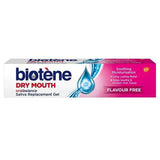








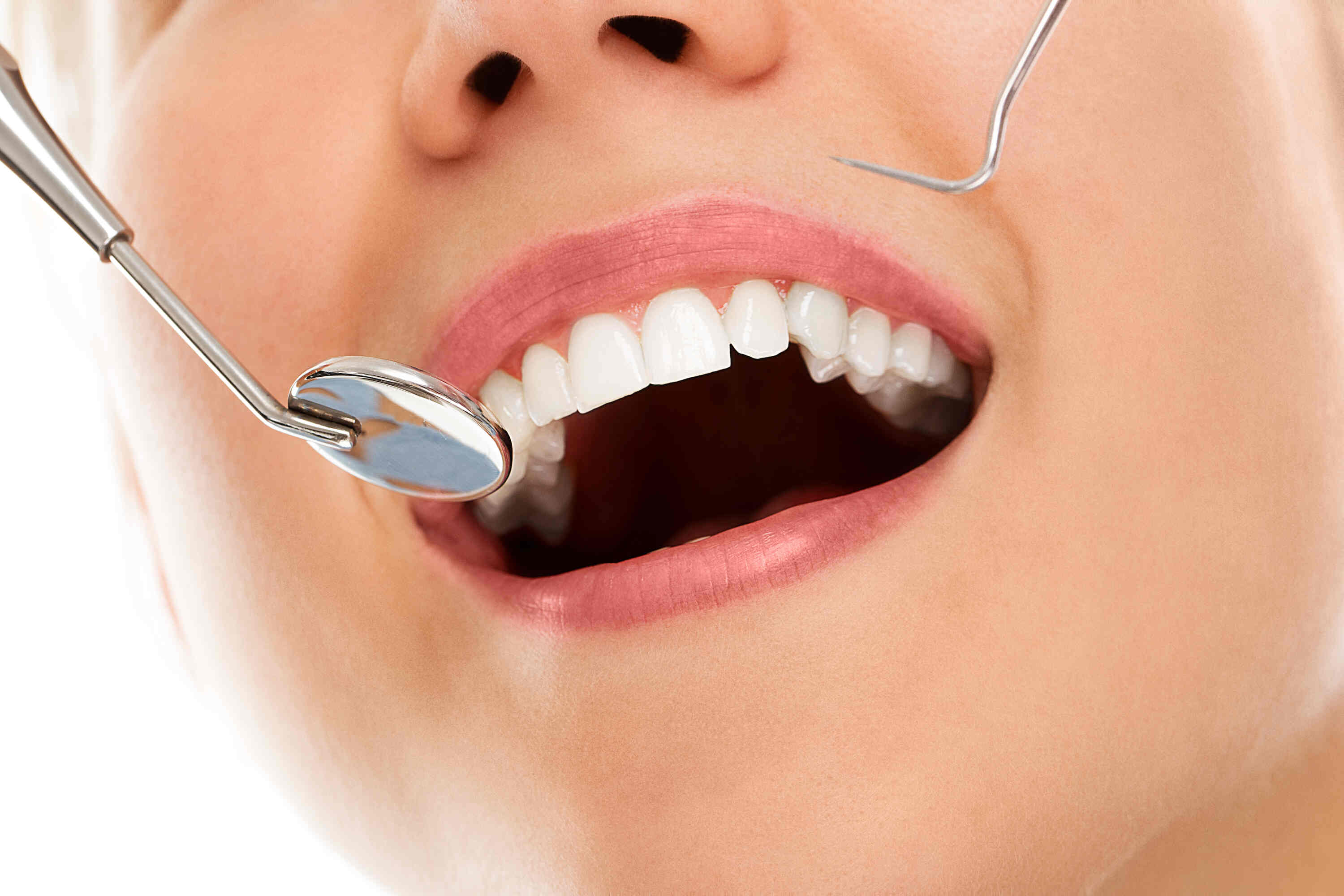







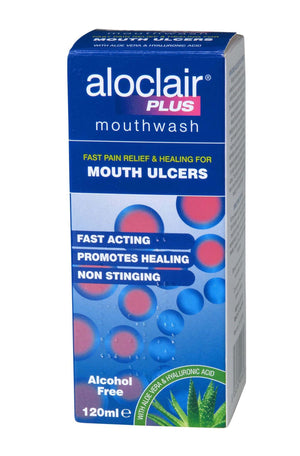

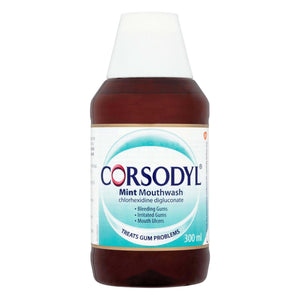

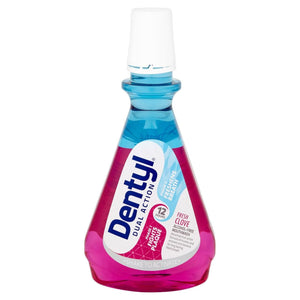




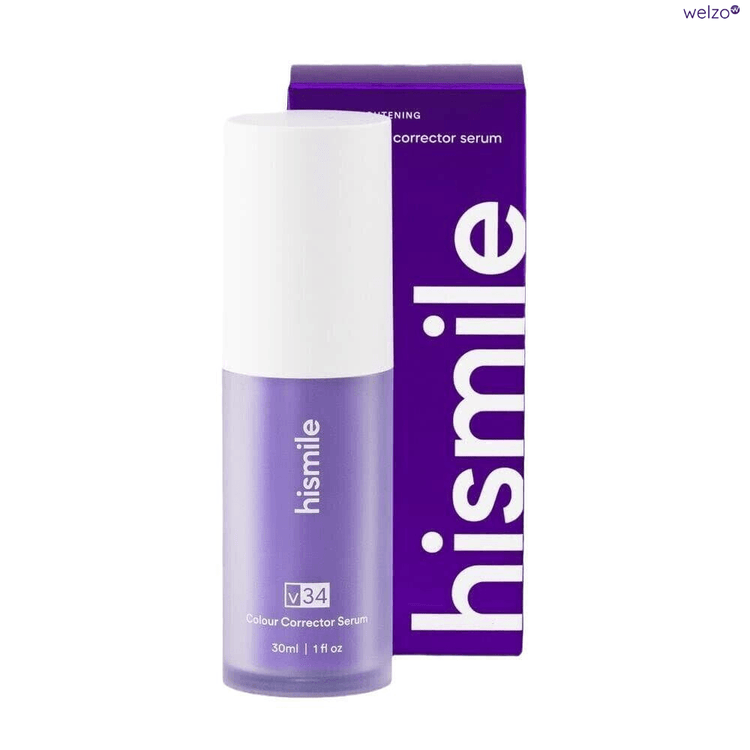
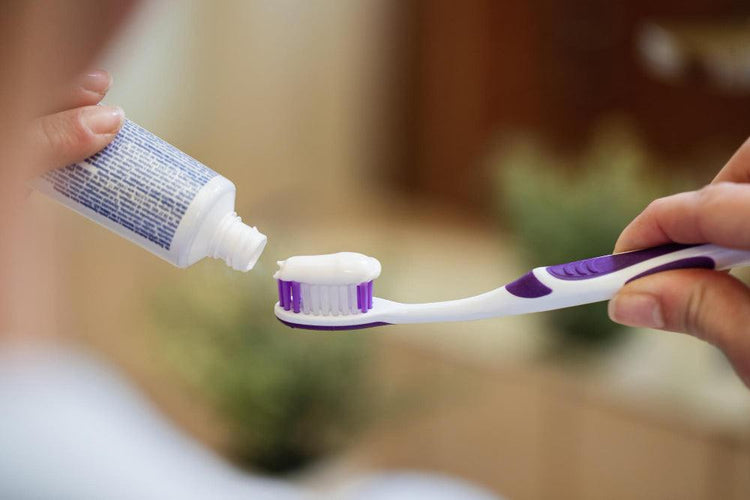

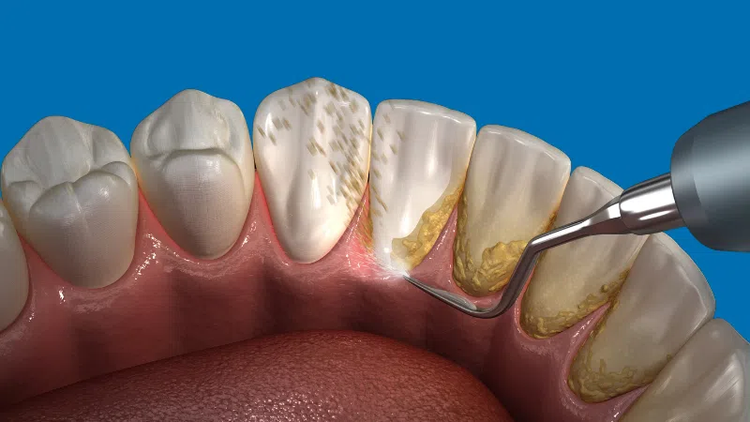
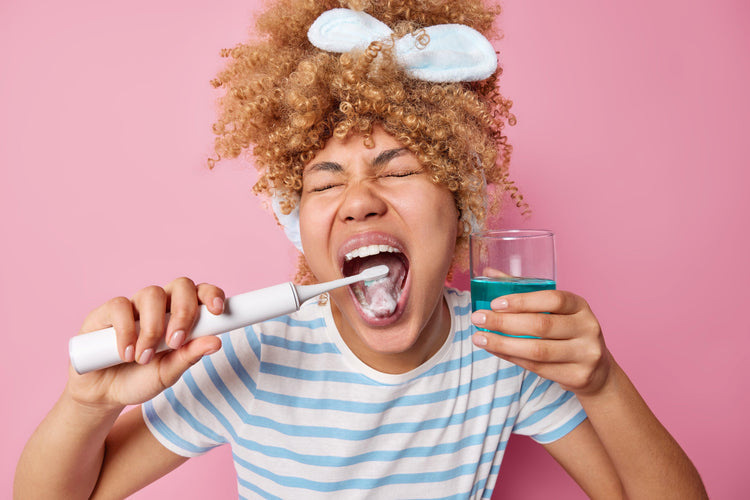
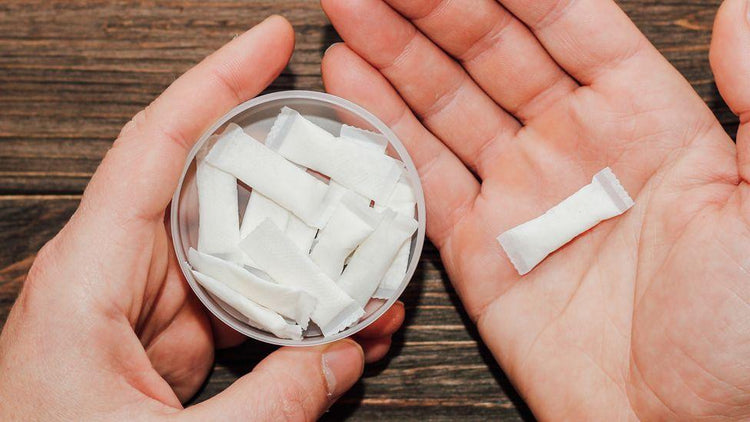
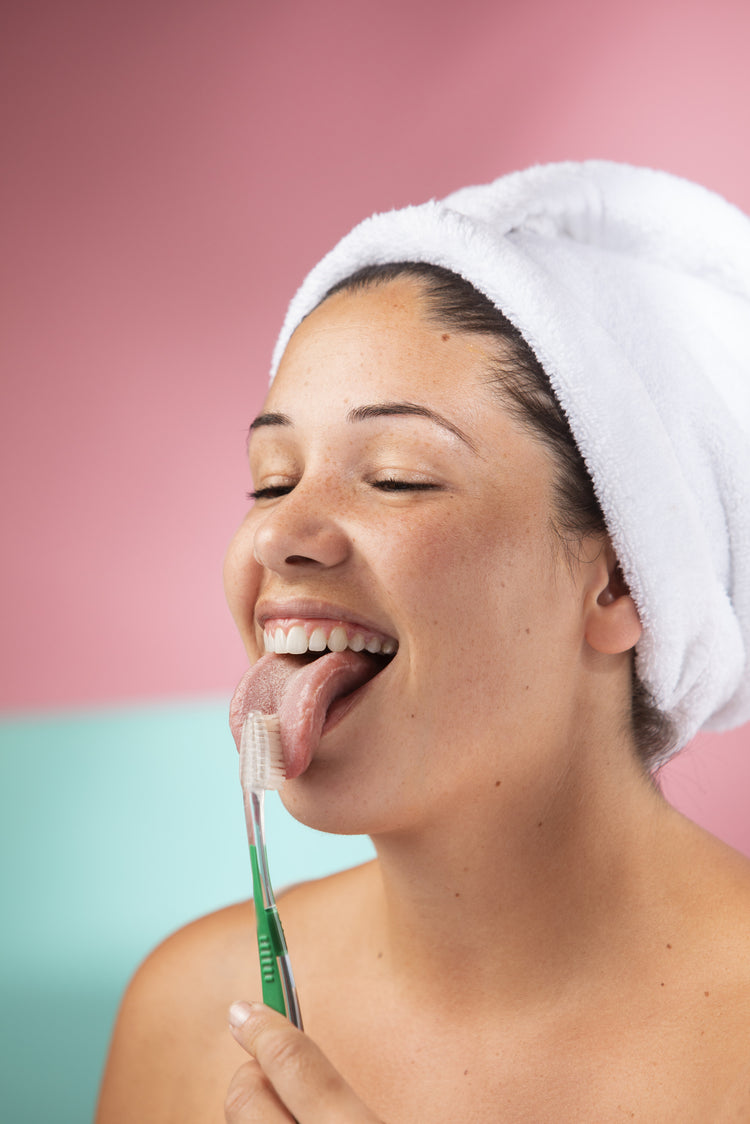
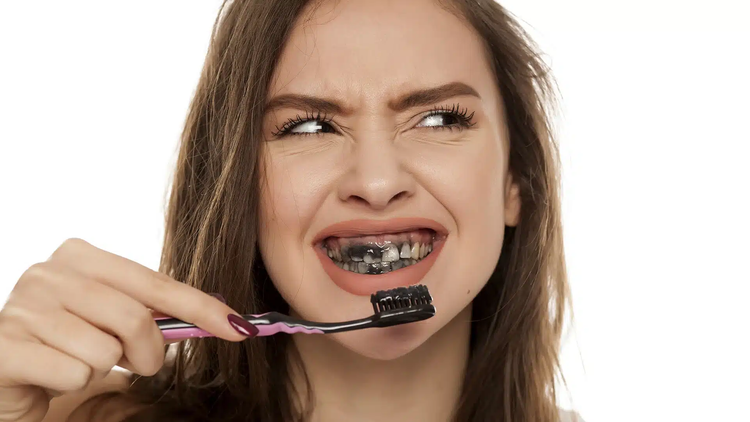
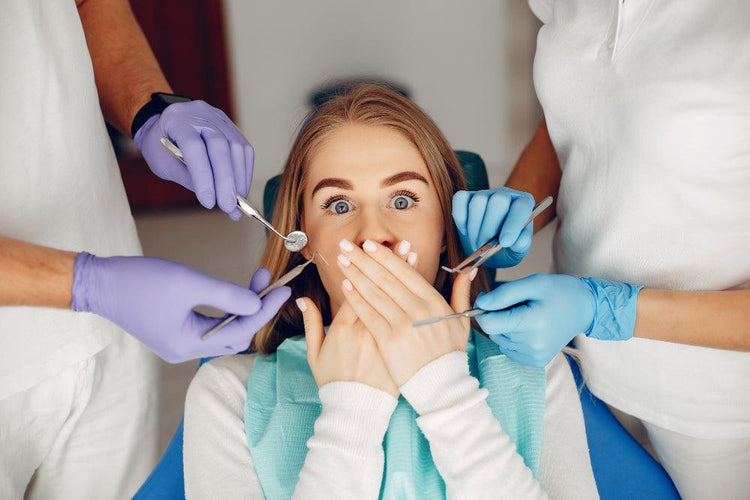
 Rated Excellent by 26,523+ Reviews
Rated Excellent by 26,523+ Reviews